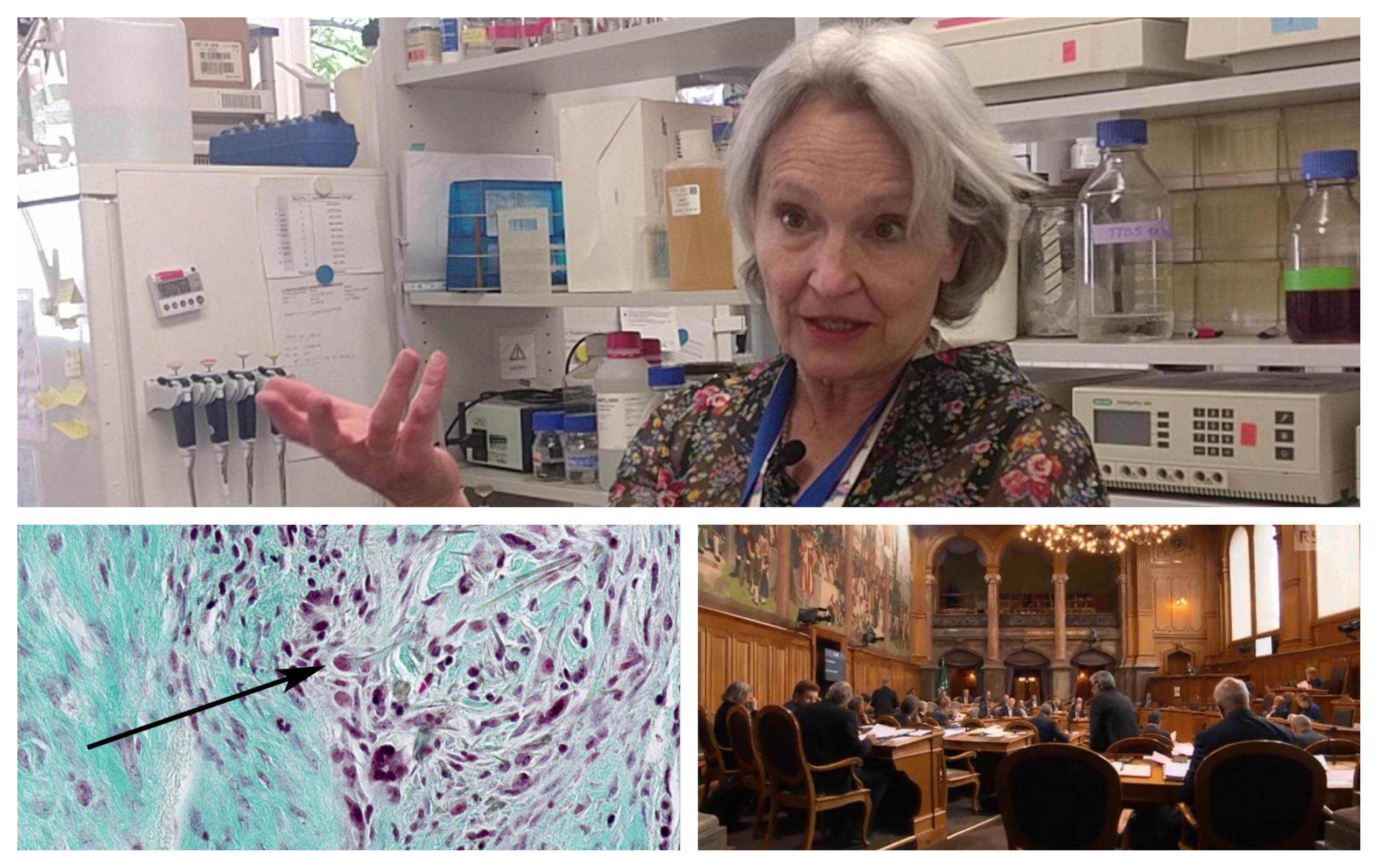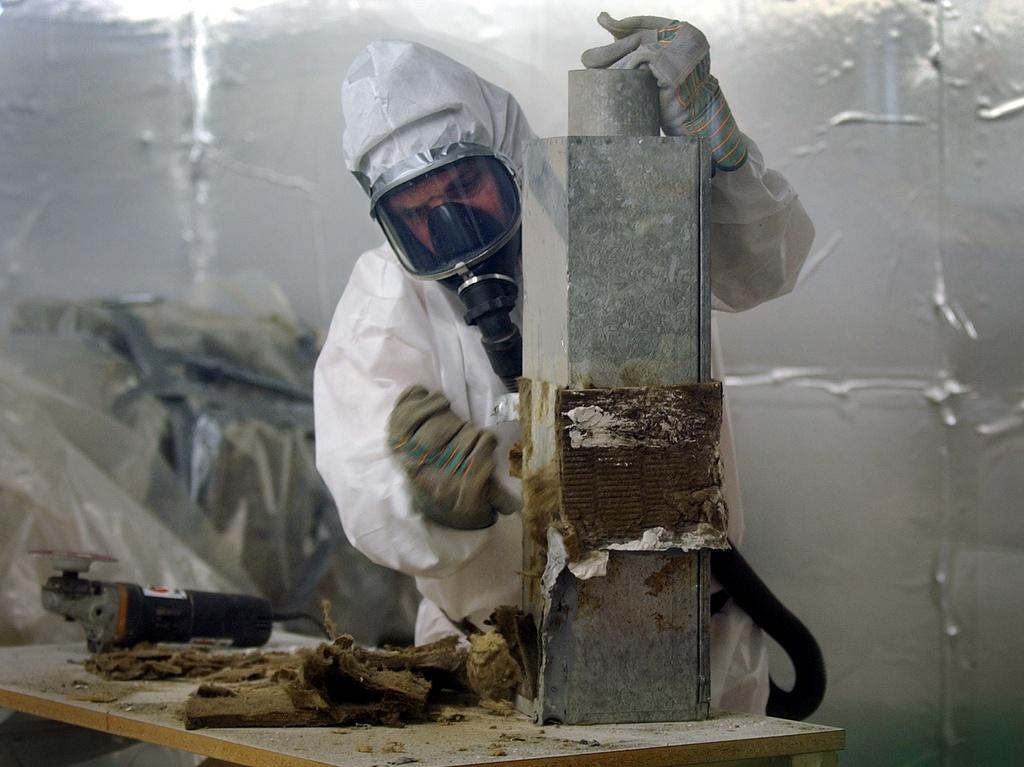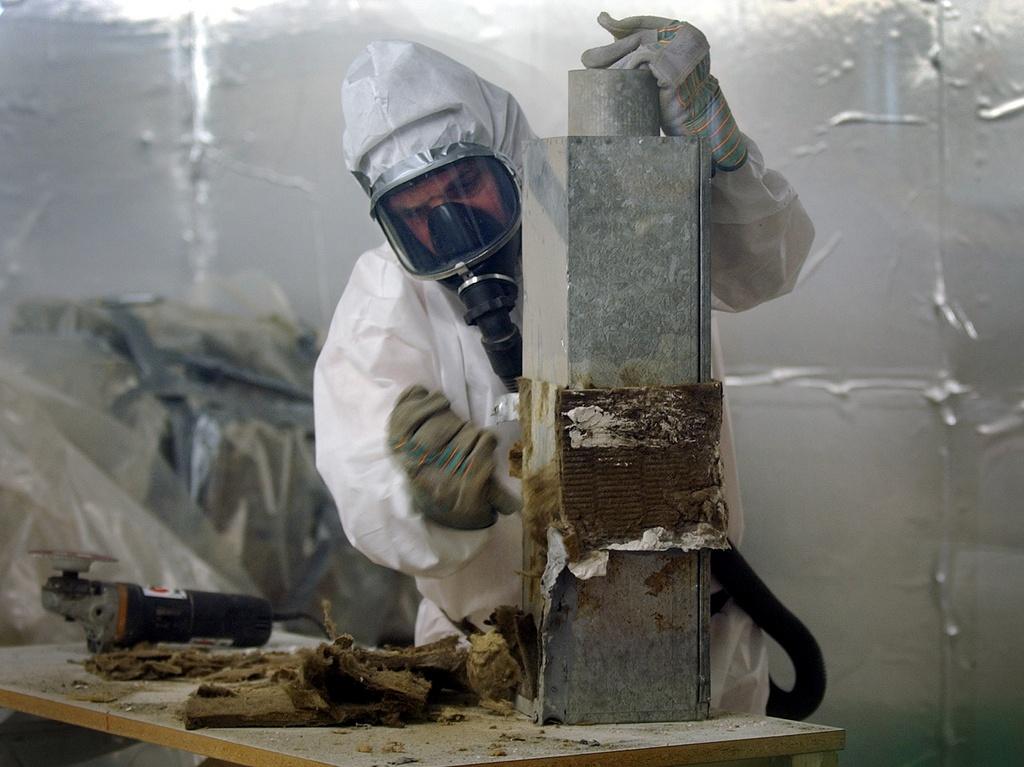Asbestos: scientific breakthroughs and political debate

As the issue of compensation for victims of cancer linked to asbestos exposure is debated in the Swiss parliament, new research has shed light on how asbestos fibres cause cancer.
Every year, around 120 people in Switzerland develop mesothelioma. This is a rare cancer that develops in the mesothelium, a thin membrane that protects the internal organs of the chest and abdomen, and is caused by inhaling asbestos fibres. In most cases, people encountered the hazardous material while at work before its use was banned nationally in 1989.
Despite ceasing the production of asbestos, people will continue to die from it for a long time, says Emanuela Felley-Bosco, a researcher at the Laboratory of Molecular Oncology at University Hospital Zurich.
In a recent article she wrote for the scitecheuropa.euExternal link website, the scientist points out that asbestos bans are not in place everywhere. Global production and consumption of asbestos peaked in 1980 at 4.8 million tonnes, before decreasing to 1.4 million in 2016. Russia was the biggest producer in 2016 (692,000 tonnes).
The researcher says mesothelioma is likely to remain an issue for many years, due to the long timespan between exposure to asbestos and the development of a malignant tumour.
Why does asbestos cause cancer?
Asbestos is not carcinogenic, chemically speaking. What makes it dangerous is the size and sharp, elongated shape of fibres which, when inhaled, lodge in the mesothelium.
As the fibres are too large to be removed, they can repeatedly damage internal tissue. At that stage, the immune system intervenes destroying any damaged or “defective” cells, and re-generating new tissue.
New research, funded by the Swiss National Science Foundation and supported by the university hospitals of Zurich, Geneva and Toronto, as well as the University of Freiburg and the Federal Institute of Technology, Zurich (ETHZ), has revealed how this creates an imbalance in the body’s immune response. A person’s defence mechanism is lowered, while the regenerative aspect is accentuated. Carcinogenic cells, which would be quickly eliminated in a healthy patient, then begin to reproduce and form a tumour.
This imbalance is due to changes in the RNA, says Felley-Bosco. Such mutations will need to be studied in more detail but they could provide a clue to identifying the “genetic signature” of asbestos-related cancer.
The hope is that, thanks to the data, one day an early diagnosis will be possible, which will be “useful for all types of cancer but crucial for mesothelioma”, Felley-Bosco explains.
Prescription after 20 years “unreasonable”
While the scientific battle to fight mesothelioma continues, the issue of asbestos has returned to the political arena in Switzerland. Parliament concluded a debate on Tuesday on the deadline to be fixed for compensation claims linked to asbestos exposure. This refers to the amount of time between exposure to asbestos fibres and claims for compensation for work-related illnesses, including for affected foreign workers who have left Switzerland and returned to their home countries.
The Strasbourg-based European Court of Human Rights says the current ten-year period for claims is too short. On Tuesday, the Swiss Senate followed the House of Representatives in extending it to 20 years.
Felley-Bosco, however, says this extended period is “unreasonable”. In Europe, where asbestos has been banned for over 20 years, mesothelioma cases are on the rise, she notes. In addition, the disease is more widespread among people aged 70 and over.
The researcher claims that up to 40 years could easily pass between exposure to asbestos and the onset of mesothelioma.

More
Asbestos fund set up to support victims
Translated from Italian by Simon Bradley

In compliance with the JTI standards
More: SWI swissinfo.ch certified by the Journalism Trust Initiative












You can find an overview of ongoing debates with our journalists here . Please join us!
If you want to start a conversation about a topic raised in this article or want to report factual errors, email us at english@swissinfo.ch.